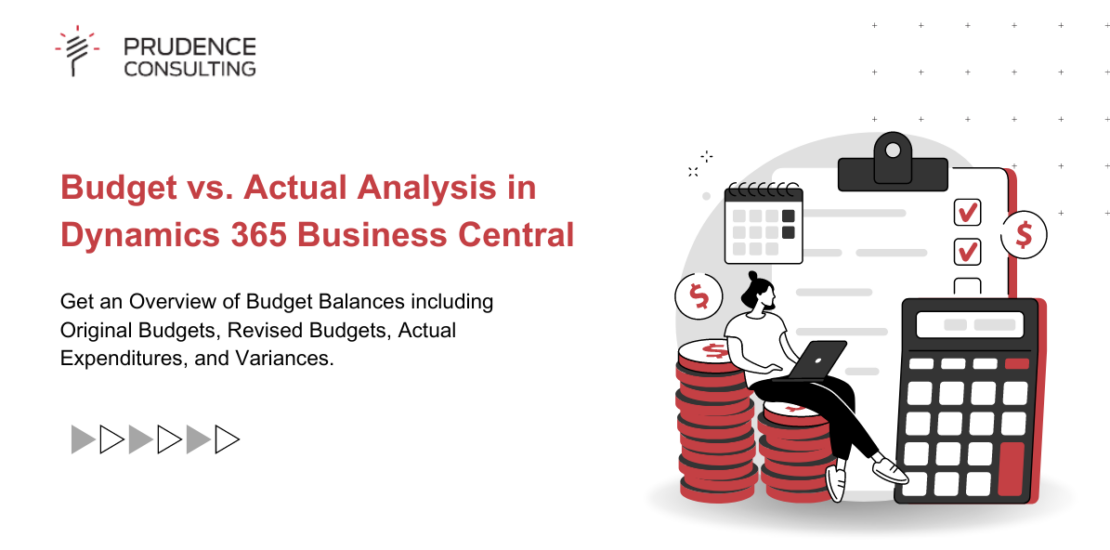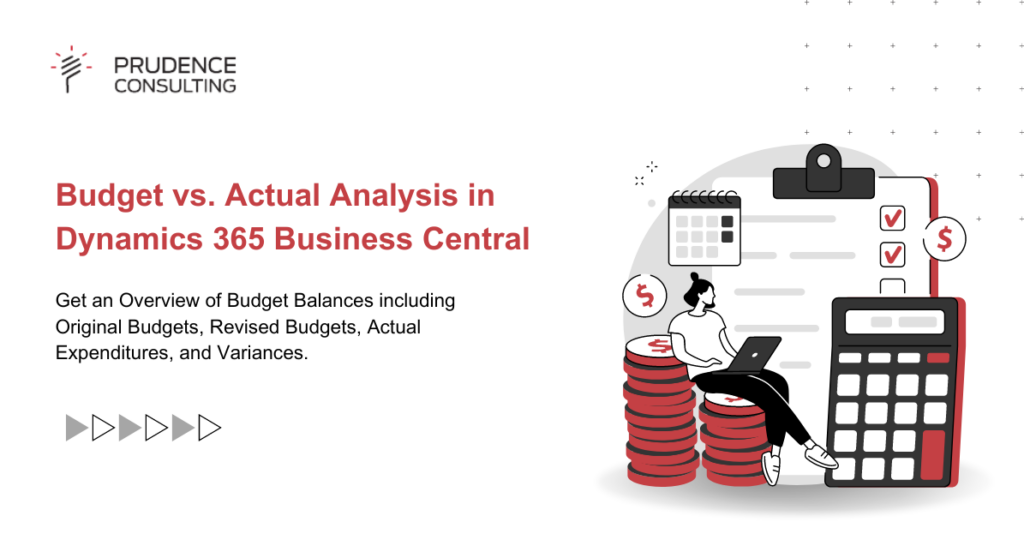Understanding Budget vs. Actual Analysis in Dynamics 365 Business Central
-
April 25, 2024
- Posted by: piyush.gupta@prudencesoftech.in
- Category: Dynamics 365 Business Central
No Comments

- April 25, 2024
- Posted by: piyush.gupta@prudencesoftech.in
- Category: Dynamics 365 Business Central


Managing finances effectively is vital for any organization’s success. Budgeting helps in planning and controlling expenses, while actual analysis ensures alignment with financial goals. In Dynamics 365 Business Central (BC), the Budget versus Actual report serves as a vital tool for comparing planned budgets with actual expenditures. In this article, we’ll delve into the functionalities of this report, exploring how it aids in financial management.
Understanding the Budget versus Actual Report
The Budget versus Actual report in Dynamics 365 BC provides a comprehensive overview of budget balances, including original budgets, revised budgets, actual expenditures, and variances. Let’s break down its components:
- Original Budget and Revised Budget Amounts: The original budget comprises the initial expense and revenue budget amounts. Revised budget amounts encompass original budget figures, along with revisions, transfers, and carry-forward amounts.
- Actual Expenditures: This section sums up the debits and credits posted for selected financial dimension values, providing insights into actual spending.
- Variances: Variances represent the disparities between actual and revised budget amounts, expressed both in absolute values and percentages. These variances shed light on where the actual spending differs from the planned budget.
The report is organized by budget model and dimension values, offering a structured view of financial data.
Filtering and Customization
Users can tailor the report by filtering data based on specific parameters. Key filtering options include:
- Financial Dimension Set: Selecting a predefined set of accounts or dimensions helps focus the report on relevant financial data.
- Budget Model: Choosing a specific budget model enables users to analyze data according to different budget scenarios.
- Posting Layer: This parameter allows users to view actual balances classified under different ledger classifications.
- Date Range: Users can specify the period for which budget balances should be included in the report, facilitating analysis over custom time frames.
Navigating the Report
Accessing the Budget versus Actual report in Dynamics 365 BC is straightforward:
- Navigate to Budgeting > Reports > Basic Budgeting > Actual versus Budget.
- Select desired parameters to customize the report according to specific requirements.
- Generate the report to view comprehensive insights into budget performance.
Conclusion
In conclusion, the Budget versus Actual report in Dynamics 365 BC is a powerful tool for financial analysis and decision-making. By comparing planned budgets with actual expenditures, organizations can identify variances, optimize spending, and drive better financial outcomes. Understanding the functionalities of this report and leveraging its customization options empowers users to gain valuable insights into budget performance and make informed financial decisions.
Also Read : Cloud ERP solution


